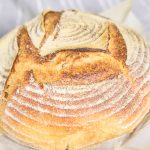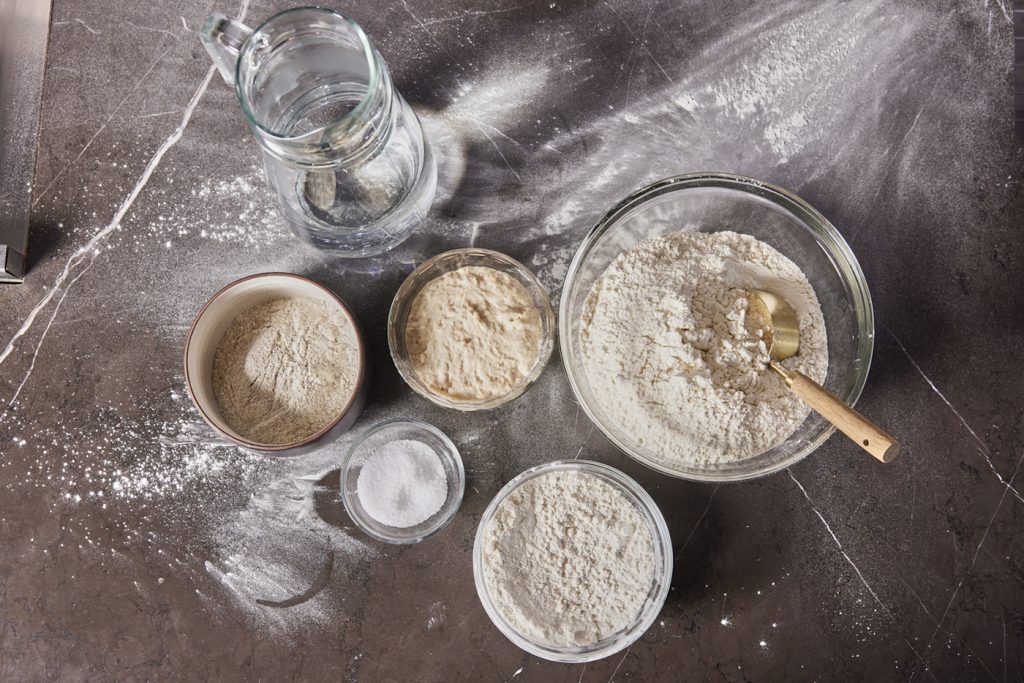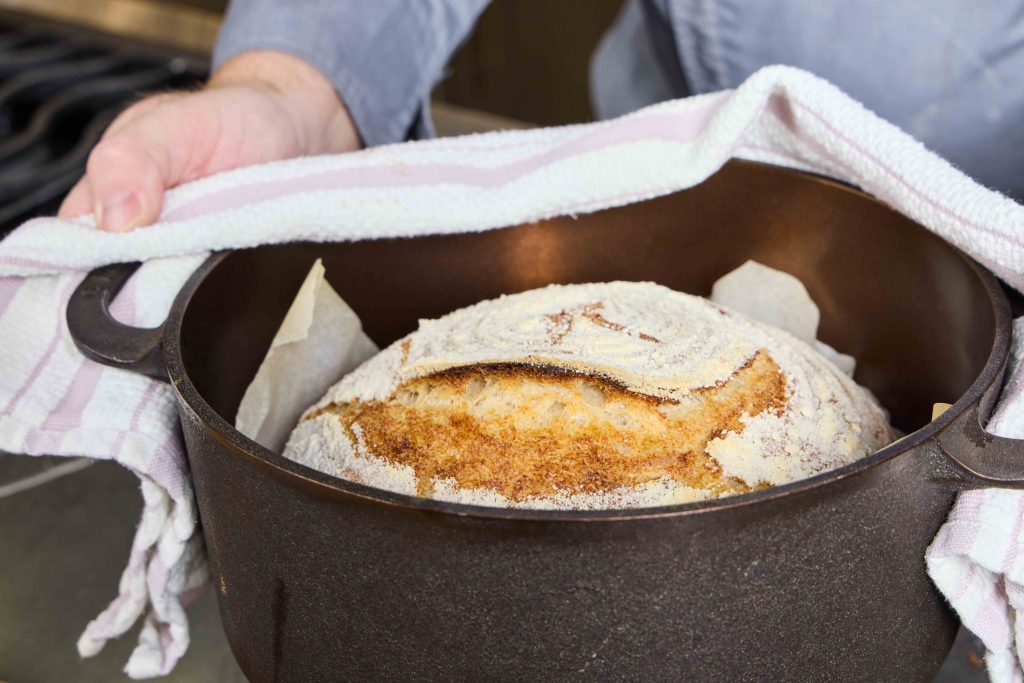Description
Based on Tartine Sourdough Recipe, Slightly Modified, by The Perfect Loaf
Ingredients
- 740 plus 50 grams water between 80° and 85°F (27° and 29°C)
- 200 g levain (active sourdough starter)
- 700 g bread flour
- 200 g all-purpose flour
- 100 g whole-wheat flour
- 20 g salt
Instructions
Autolyse
- Combine the levain and the 740 grams of water. Use a Thermapen ONE to make sure the water is between 80° and 85°F (27° and 29°C).
- Add half of each of the flours to the levain-water mixture and combine to form a smooth batter.
- Add the rest of the flour to the batter and mix it until it is a shaggy mass with no dry lumps visible.
- Allow the dough to rest, covered, on the counter top for 30 minutes. This will allow the natural enzymes in the flour to create a more easily workable and shapeable dough that will have a better texture.
Mix final dough
- Uncover the dough and sprinkle the salt evenly over the surface.
- Add the remaining 50 grams of water, also around 85°F (29°C), wetting all the salt.
- Mix the dough by squeezing and pinching it between your thumbs and fingers. Continue until you feel no lumps in the dough.
Bulk ferment
- Cover the dough and let it rest in a warm place (80–90°F [27–32°C]) for 1 hour, until it has risen by about 30%.
Divide and shape
- Flour a work surface.
- Tip your dough out onto the surface and scrape as many bits free from the bowl as possible.
- With a bench scraper or sharp knife cut the dough into two equal halves.
- Working with one lump, created the shape and some surface tension on the bread by basically doing another fold: pull the part that is farthest from you out away from you and then fold it in onto the top of the lump.
- Do the same for the sides and the part nearest you.
- Turn the dough over and pull and tuck the edges in under the loaf, creating tension on the surface of the loaf.
- Repeat with the other loaf.
- If you have proofing baskets, sprinkle them with rice flour. If not, line two bowls with cloths (such as a cotton or linen napkin) and sprinkle the cloths with rice flour.
- Place the loaves seam-side up in the bowls/baskets.
Proof the loaves
- Place the loaves in a warm place to proof for as little as one hour in an oven with a proof setting or a cooler with a few inches of hot water in the bottom of it. Your proof-box should be between 75° and 85°F (24° and 29°C). They should rise and feel airier, but not be completely inflated. They can also proof in the refrigerator overnight. (See section on proofing times above.)
Score and bake
- While the bread is proofing, preheat your oven to 500°F (260°C) with a lidded cast-iron pan inside.
- (Note: your bread will bake better if you have a baking stone on the oven rack below your bread. It will act as a buffer against the heating elements in the bottom of your oven.)
- Once the bread is proofed, turn it out onto a piece of parchment paper.
- Score the top of the loaf with a sharp knife or a razor blade, cutting a square around the crown of the bread.Remove the cast-iron pot from the oven.
- Lift the parchment paper with the bread on it and lower it carefully into the cast iron pot.
- Place the lid on the pot, put it in the oven, and lower the oven temperature to 475°F (246°C).
- Set a timer for 20 minutes and bake.
- Once 20 minutes has elapsed, set your ChefAlarm to 200°F (93°C), remove the lid from the pot and insert a probe into the center of your bread.
- When the alarm sounds on your ChefAlarm, verify the temperature with your Thermapen ONE.
- Remove the bread from the oven and place the new, uncooked loaf in the pot, following the same method for cooking it.
- Allow the bread to cool on the countertop for at least an hour.
- Slice, or just tear the bread into chunks, eating it with plenty of good, salted butter and jam.


